Tibet, the “Roof of the World,” is a place of serene landscapes, spiritual sanctuaries, and a rich, vibrant culture. Nestled in the Himalayas, this autonomous region of China offers a unique blend of natural beauty and cultural heritage. Whether you’re an adventurer, a spiritual seeker, or simply a curious traveler, Tibet has something magical to offer. Here are some of the best places to visit in this breathtaking land.
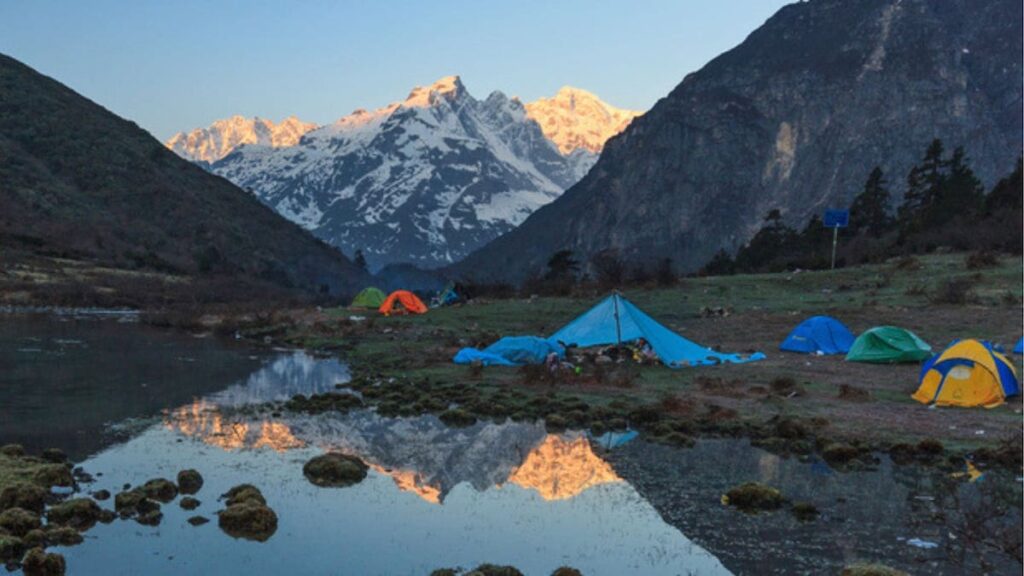
1. Potala Palace, Lhasa-A Marvel of Tibetan Architecture
A symbol of Tibet, the Potala Palace in Lhasa is an architectural marvel and a treasure trove of Tibetan history and culture. Once the winter residence of the Dalai Lama, this majestic palace stands atop Marpo Ri Hill, offering panoramic views of the city. Its intricate design and religious significance make it a must-visit. Don’t miss the stunning murals and the sacred chambers within.
Historical Significance
The Potala Palace, standing majestically in Lhasa, is not just a symbol of Tibet but a marvel of architectural and cultural significance. It was named after Mount Potalaka, the mythical abode of Chenresig or Avalokiteshvara. Originally constructed in the 7th century by Emperor Songtsen Gampo, it was rebuilt in the 17th century by the 5th Dalai Lama and has since been the winter residence of successive Dalai Lamas and a central location for political and religious activities in Tibet.
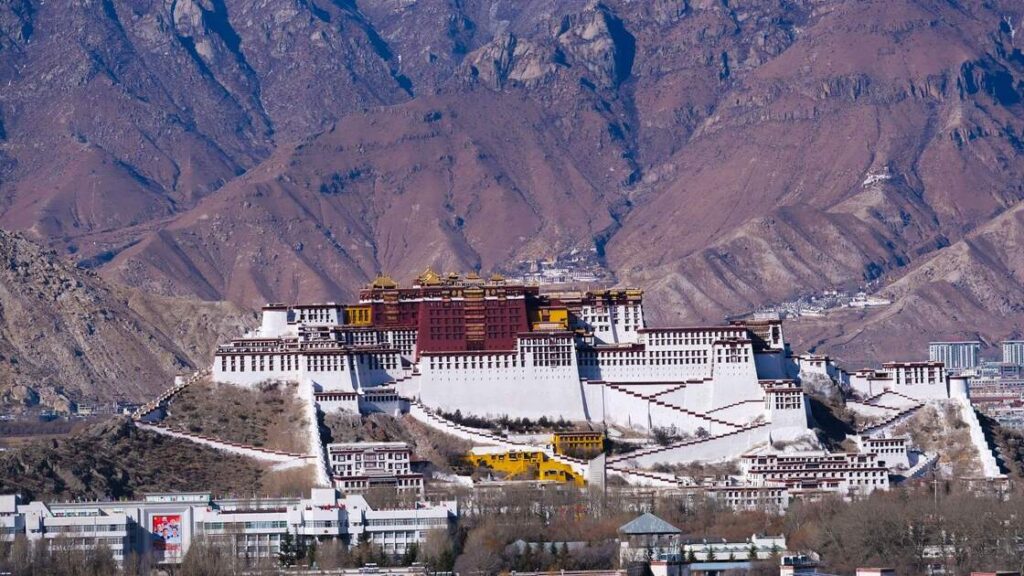
Architectural Splendor
This awe-inspiring structure, perched atop Marpo Ri Hill at an altitude of over 3,700 meters, dominates the Lhasa skyline. The Potala Palace is a masterpiece of Tibetan architecture, notable for its towering white walls, vibrant red and white palaces, and golden roofs that gleam under the sun. This 13-story structure houses over 1,000 rooms, 10,000 shrines, and about 200,000 statues, making it a grandiose complex of cultural and historical significance.
Inside the Palace
The Potala Palace is divided mainly into two parts: the White Palace and the Red Palace.
• The White Palace: This area served as the administrative section and the living quarters of the Dalai Lama. It contains the main ceremonial hall, throne rooms, and offices, as well as the living quarters of the Dalai Lama. The White Palace also features courtyards and chapels, with intricately decorated interiors that showcase Tibetan art and craftsmanship.
• The Red Palace: The heart of the Potala Palace, the Red Palace, is dedicated to religious study and Buddhist prayer. It’s known for its intricate chapels, beautifully adorned with murals, paintings, and sculptures. These chapels house sacred relics, Buddhist scriptures, and stupas (burial mounds) of past Dalai Lamas. The most prominent among them is the Great West Hall, which tells the story of the Buddha and the building of the Potala Palace through its murals.
Cultural and Spiritual Significance
The Potala Palace is a symbol of Tibetan Buddhism and is revered as a sacred site. It’s a pilgrimage destination for Buddhists worldwide. The palace’s architecture and artifacts embody the essence of Tibetan religion, culture, and art. The murals, thangkas (Tibetan scroll paintings), and statues not only serve as decoration but also as tools for spiritual teaching and meditation.
Visiting Potala Palace
Visitors to the Potala Palace are usually awestruck by its grandeur and spiritual ambiance. It’s advisable to acclimatize to the high altitude of Lhasa before visiting the palace, as there are many stairs to climb. The number of daily visitors is limited to protect the structure, so obtaining a ticket in advance is recommended. As you walk through the ancient corridors, you’ll find yourself transported back in time, surrounded by the history and spirituality that permeate the walls of this majestic palace.

The Potala Palace is not just a tourist attraction; it’s a testament to the spiritual and historical journey of Tibet. Its grand architecture, rich history, and spiritual significance make it a must-visit for anyone traveling to this part of the world. The Potala Palace stands as a proud reminder of the resilience and beauty of Tibetan culture.
2. Mount Kailash
For those seeking a spiritual journey, Mount Kailash is unmissable. Considered sacred in Buddhism, Hinduism, Jainism, and Bon, this peak has attracted pilgrims and adventurers alike. The Kailash trek, a challenging yet rewarding experience, is known for its stunning landscapes and spiritual significance. Remember, this is more than just a trek; it’s a journey of self-discovery.
Spiritual and Religious Significance
Mount Kailash, towering at 6,638 meters in the remote Himalayan region of western Tibet, is more than just a physical peak; it’s a spiritual epicenter for multiple religions. For Hindus, it is the abode of Lord Shiva, a god of destruction and regeneration. In Buddhism, it is associated with the paradise of the Buddha Demchok and represents the axis of the world. Jains revere it as the site where their first prophet achieved enlightenment, while in the ancient Bon religion, it’s the seat of all spiritual power.

The Pilgrimage and Kora
The pilgrimage to Mount Kailash, known as the Kailash Kora, is a central spiritual journey for followers of these religions. This trek, approximately 52 kilometers long, is not just physically demanding due to its high altitude and rugged terrain, but it’s also a test of spiritual endurance. Pilgrims believe that circumambulating Mount Kailash on foot brings significant merit and even spiritual liberation. The devout often perform this journey with deep reverence, some prostrating the entire route.
The Landscape and Its Challenges
The journey to Mount Kailash is through one of the most breathtaking yet isolated landscapes on Earth. It takes you through remote areas of the Tibetan plateau, with stark, rugged scenery, high-altitude lakes like Lake Manasarovar, and ancient monasteries adding to the mystique. The high altitude and harsh weather conditions pose challenges, requiring physical preparedness and acclimatization.
Cultural and Environmental Aspects
The area around Mount Kailash is rich in cultural heritage. The ancient kingdom of Guge, with its ruins and Tholing Monastery, offers insights into Tibet’s past. Environmental conservation efforts are crucial in this region, given the fragile ecosystem and the sacred nature of the mountain. Climbing Mount Kailash is traditionally banned, as it’s considered a sacrilege to disturb its divine tranquility.
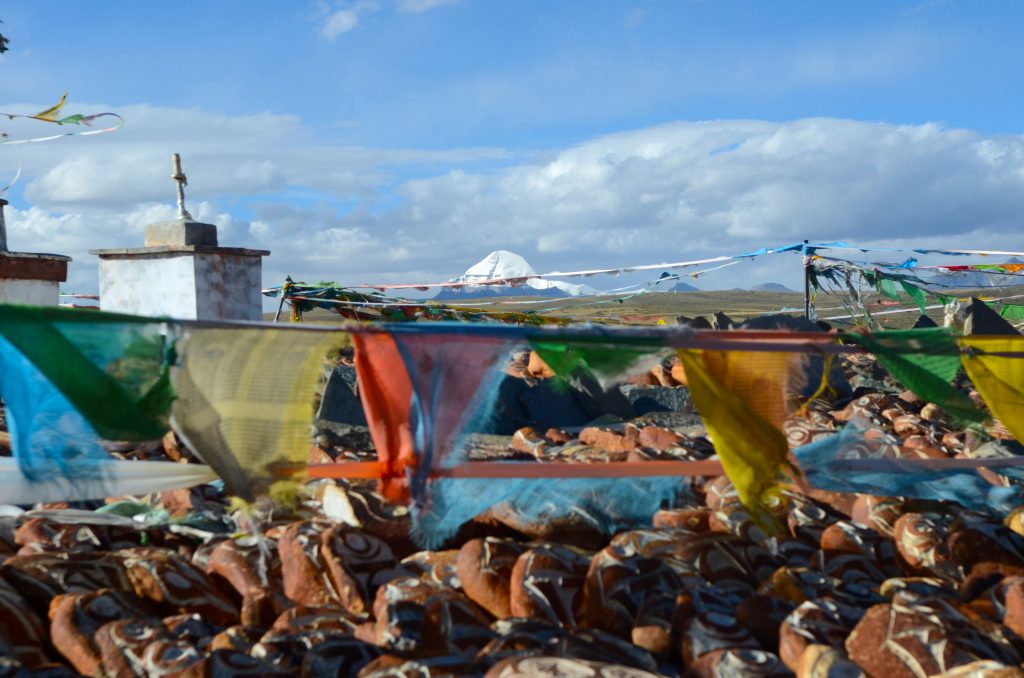
Best Time to Visit
The best time to undertake the Kailash Kora is from May to September when the weather is relatively stable. This period also coincides with the Saga Dawa Festival, an important religious festival celebrating the birth, enlightenment, and Parinirvana (death) of Buddha. During this festival, the kora is particularly auspicious.
Travel Considerations
Traveling to Mount Kailash requires careful planning. Visitors usually need to arrange a tour through a recognized agency, as independent travel in this region is not permitted. This includes acquiring necessary permits, a guide, and transportation. Physical fitness and readiness for high altitude are essential, along with respect for local customs and environmental sensitivity.
Mount Kailash is a beacon of spirituality and mysticism, drawing pilgrims and adventurers alike with its divine presence and breathtaking beauty. A journey to this sacred peak is more than a trek; it’s a once-in-a-lifetime experience that transcends physical boundaries, offering a glimpse into the profound depths of human faith and the awe-inspiring power of nature.
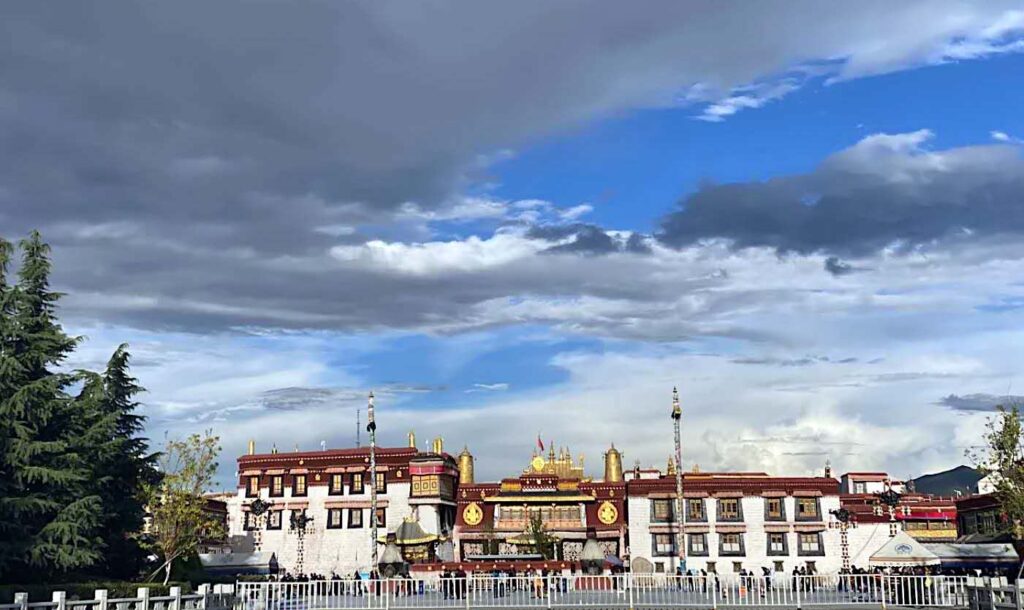
3. Jokhang Temple, Lhasa
The heart of Tibetan Buddhism, Jokhang Temple, is the most sacred and important temple in Tibet. Located in Barkhor Square in Lhasa, it’s a focal point for pilgrims from all over Tibet. The temple’s architecture and the religious activities there provide deep insights into Tibetan culture. The surrounding Barkhor Street is also a great place to shop for traditional Tibetan crafts.
Historical and Cultural Significance
Jokhang Temple, located in Barkhor Square in Lhasa, is not just a religious edifice but the spiritual heart of Tibet. Founded in the 7th century by King Songtsen Gampo, it is considered the most sacred and important temple in Tibetan Buddhism. The temple was built to house the statues of Buddha brought as part of the dowries of the King’s Nepalese and Chinese wives, symbolizing the integration of Buddhist culture into Tibet.
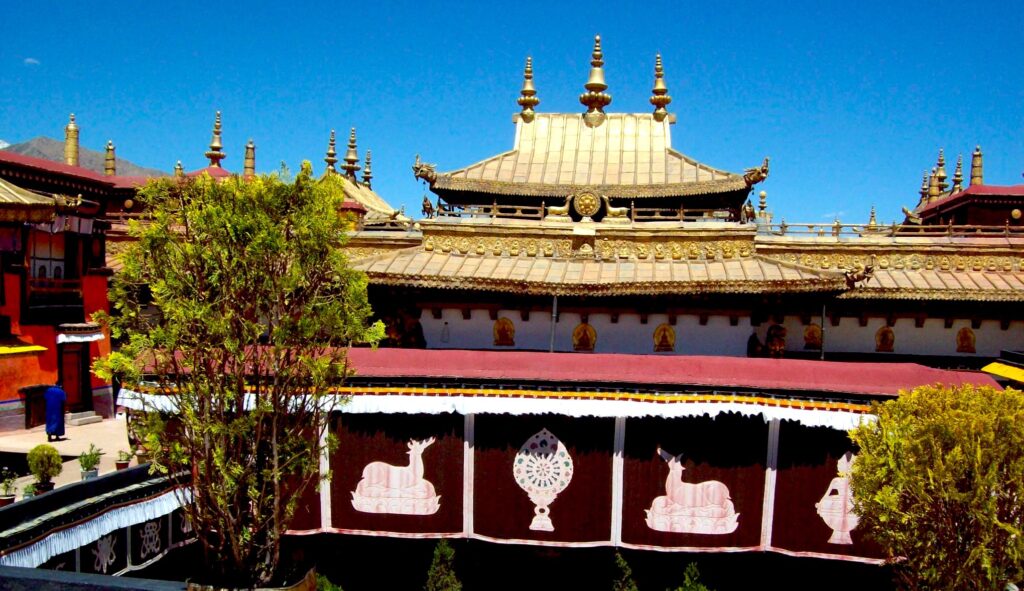
Architectural Marvel
The architecture of Jokhang Temple is a harmonious blend of Indian vihara design, Tibetan, and Nepalese architectural elements. The temple is a four-story timber complex with a golden roof, and it features a unique combination of statues, chapels, and murals. Its wooden beams and rafters are adorned with intricate carvings and Tibetan motifs, while the interior is filled with a sense of serenity and sacredness.
The Statue of Jowo Rinpoche
The most revered and sacred object in Jokhang Temple is the life-sized statue of Jowo Rinpoche, a representation of the Buddha at age twelve. This statue is believed to have been blessed by Buddha himself, making it highly venerated among Tibetans. Pilgrims from all over Tibet come to the temple to pay homage to this statue, often bringing traditional offerings like butter lamps, barley flour, and white scarves.
Pilgrimage and Rituals
Jokhang Temple is the focal point for numerous religious festivals and activities in Tibet. Pilgrims circumambulate the temple in a clockwise direction, often prostrating themselves full-length on the ground at every step as a sign of devotion. The Barkhor, the circumambulation route around Jokhang, is also a bustling market area where pilgrims, locals, and tourists mingle.
The Heart of Lhasa
The temple’s location in central Lhasa makes it a hub for cultural and social interaction. The temple complex is surrounded by narrow streets and old buildings, giving visitors a glimpse into traditional Tibetan life. The Barkhor surrounding the temple is a lively area filled with shops selling religious artifacts, handicrafts, and traditional Tibetan items.

Preserving Tradition
Despite various historical upheavals, Jokhang Temple has remained a vital center for Tibetan Buddhism. Efforts have been made to preserve and restore the temple, ensuring that its spiritual and cultural significance endures. The temple stands as a testament to the resilience of Tibetan religion and culture.
Visiting the Temple
Visitors to Jokhang Temple should be mindful of its sacred nature and respect local customs. Dress modestly, remove hats and sunglasses inside chapels, and follow the clockwise direction while circumambulating. Photography inside the temple is usually restricted, especially of the sacred Jowo Rinpoche statue. The best time to visit is in the morning when the temple is filled with pilgrims offering prayers, which provides an authentic insight into the religious practices of Tibetan Buddhism.
Jokhang Temple is not just a monument but a living museum of Tibetan spiritual and cultural heritage. A visit to this sacred temple offers a profound insight into the soul of Tibet, where spirituality permeates every stone and prayer flag. It remains a beacon of devotion, drawing pilgrims and visitors into its serene and sacred embrace, making it a must-visit for anyone seeking to understand the essence of Tibet.
4. Yamdrok Lake
One of the three holy lakes in Tibet, Yamdrok Lake, is known for its stunning turquoise waters. Surrounded by snow-capped mountains, its beauty is unparalleled. A visit here offers not only breathtaking views but also a serene atmosphere that calms the soul. It’s a perfect spot for photography enthusiasts and nature lovers.
Geographical Marvel
Yamdrok Lake, one of Tibet’s three largest sacred lakes, is an extraordinary natural wonder. Located roughly 100 kilometers southwest of Lhasa, this freshwater lake sits at an altitude of about 4,400 meters (14,435 feet). Known for its stunning turquoise-blue waters, the lake is nestled amidst the Himalayan mountains, creating a breathtaking landscape that’s both serene and majestic. Yamdrok Lake is over 72 kilometers (45 miles) long and, from certain angles, appears like a coiling scorpion.

Spiritual Significance
In Tibetan belief, Yamdrok Lake is considered a talisman, contributing to the life-sustaining essence of the region. It’s believed that the lake is the transformation of a goddess, making it an important spiritual location. Tibetan folklore holds that if the lake ever dries up, Tibet will no longer be habitable. This underscores the deep spiritual connection between the Tibetan people and their natural environment.
A Photographer’s Paradise
The beauty of Yamdrok Lake is a magnet for photographers and nature enthusiasts. The vivid contrast of the lake’s turquoise waters against the stark, arid mountains, often capped with snow, creates a surreal and captivating landscape. The lake changes colors depending on the season, weather, and light, offering a kaleidoscope of stunning vistas.
Flora and Fauna
The area around Yamdrok Lake is rich in biodiversity. It’s a habitat for numerous bird species, including bar-headed geese and other migratory birds. The lake is also home to a large number of fish species, which are an important part of the local diet. Surrounding pastures are grazing grounds for yaks and sheep, integral to the local pastoral lifestyle.
Cultural and Touristic Experience
Yamdrok Lake is a popular destination for tourists visiting Tibet. The Samding Monastery, located on a peninsula jutting into the lake, is the only Tibetan monastery headed by a female reincarnation, making it a unique cultural site. Visitors often take day trips from Lhasa to the lake, enjoying the scenic drive that includes crossing the Kamba La Pass, which offers a panoramic view of the lake.
Environmental Concerns
Like many natural wonders in Tibet, Yamdrok Lake faces environmental challenges. The balance between preserving its pristine condition and accommodating increasing numbers of tourists is delicate. Responsible tourism practices are encouraged to ensure that this natural gem remains unspoiled for future generations.
Visiting Yamdrok Lake
When planning a visit to Yamdrok Lake, it’s important to consider the altitude. Acclimatization is key to enjoying the trip without health issues. The best time to visit is from April to October when the weather is more favorable. Visitors should be prepared for strong sunlight and varying temperatures.
Yamdrok Lake is not just a stunning natural beauty; it’s a symbol of the sacred landscape that defines Tibet. Visiting this magnificent lake offers an opportunity to experience the harmonious interaction between nature and spirituality that is central to Tibetan culture. It’s a place where the sacred waters mirror the sky, offering tranquility and a deep sense of connection to the natural world.
5. Rongbuk Monastery and Everest Base Camp
No visit to Tibet is complete without witnessing the grandeur of Mount Everest. Rongbuk Monastery, the highest monastery in the world, offers stunning views of Everest. The nearby Everest Base Camp is a dream destination for mountaineers and offers an up-close view of the highest peak on earth.

6. Namtso Lake
Namtso, meaning ‘Heavenly Lake,’ lives up to its name. It’s one of the most beautiful places in Tibet, with its crystal-clear waters and picturesque landscape. Located at an altitude of 4,718 meters, it’s the highest saltwater lake in the world. The peace and tranquility here are unmatched.
7. Guge Kingdom Ruins
For history buffs, the ancient ruins of the Guge Kingdom in Western Tibet are a fascinating site. These ruins provide a glimpse into the ancient history of Tibet and its architectural prowess. The area is also known for its stunning landscapes and is a great off-the-beaten-path adventure.
Conclusion
Tibet is not just a destination; it’s an experience. Its blend of natural beauty, spiritual depth, and cultural richness offers an unforgettable journey. As you plan your trip, remember that Tibet’s high altitude requires some acclimatization. Also, respecting local customs and religious traditions is crucial in this deeply spiritual land. Whether you’re gazing at the Potala Palace, trekking to Mount Kailash, or marveling at the beauty of the Yamdrok Lake, Tibet promises an adventure of a lifetime.

[…] six of your Mount Everest Base Camp tour in Tibet is arguably the most eagerly anticipated. It’s the day when you embark on a trek […]
[…] is the peak tourist season in Tibet due to its warm weather and the chance to witness unique cultural festivities. However, be aware […]